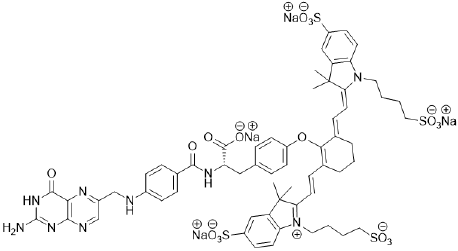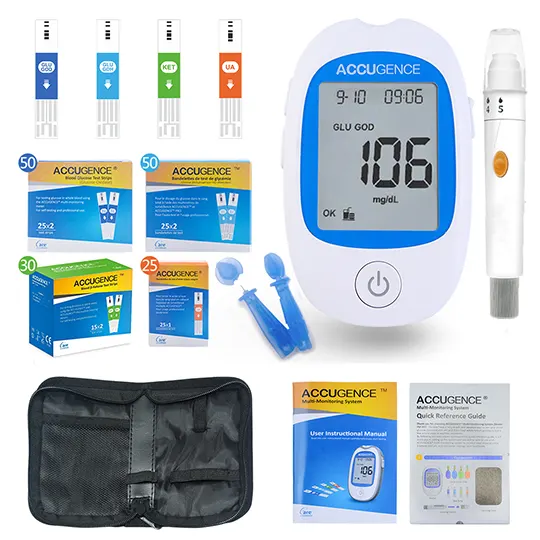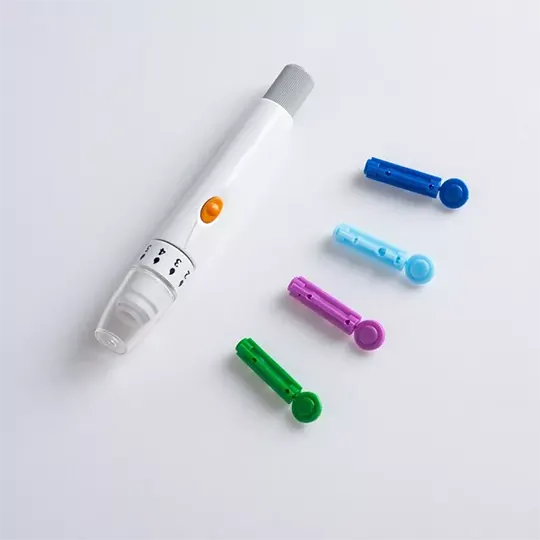Cytalux
- Generic Name: pafolacianine injection
- Brand Name: Cytalux
side effects drug center cytalux (pafolacianine injection) drug
Drug Description
What is Cytalux and how is it used?
Cytalux is a prescription medicine used as a diagnostic agent to screen for Ovarian Cancer. Cytalux may be used alone or with other medications.
Cytalux belongs to a class of drugs called Diagnostic Imaging Agents.
It is not known if Cytalux is safe and effective in children.
What are the possible side effects of Cytalux?
Cytalux may cause serious side effects including:
- hives,
- difficulty breathing,
- swelling of your face, lips, tongue, or throat,
- vomiting,
- abdominal pain,
- flushing (warmth, redness),
- chest pain or pressure,
- bloating or feeling of fullness, and
- itching
Get medical help right away, if you have any of the symptoms listed above.
The most common side effects of Cytalux include:
- nausea
Tell the doctor if you have any side effect that bothers you or that does not go away.
These are not all the possible side effects of Cytalux. For more information, ask your doctor or pharmacist.
Call your doctor for medical advice about side effects. You may report side effects to FDA at 1-800-FDA-1088.
DESCRIPTION
CYTALUX contains pafolacianine, an optical imaging agent, as a tetrasodium salt referred to as pafolacianine sodium. Chemically, pafolacianine sodium is (S)-2-(4-(((2-amino-4-oxo-3,4- dihydropteridin-6-yl)methyl)amino)benzamido)-3-(4-(((E)-2-((E)-2-(3,3-dimethyl-5-sulfonato-1-(4- sulfonatobutyl)-3H-indol-1-ium-2-yl)vinyl)-6-((E)-2-(3,3-dimethyl-5-sulfonato-1-(4- sulfonatobutyl)indolin-2-ylidene)ethylidene)cyclohex-1-en-1-yl)oxy)phenyl)propanoate hydrate Tetrasodium. Pafolacianine sodium has a molecular formula of C61H63N9Na4O17S4, a molecular mass of 1414.42 g/mol and has the following structure:
 |
CYTALUX (pafolacianine) injection is a sterile, non-pyrogenic, dark bluish green, clear aqueous solution for intravenous use. Each vial contains 3.2 mg (2 mg/mL) pafolacianine (equivalent to 3.4 mg pafolacianine sodium),14.4 mg sodium chloride, 0.23 mg potassium phosphate monobasic, 1.27 mg sodium phosphate dibasic heptahydrate in 1.6 mL volume. The pH is adjusted with sodium hydroxide and/or hydrochloric acid and is between 7.1 to 7.8.
Indications & Dosage
INDICATIONS
CYTALUX is an optical imaging agent indicated in adult patients with ovarian cancer as an adjunct for intraoperative identification of malignant lesions.
DOSAGE AND ADMINISTRATION
Recommended Testing, Evaluations And Premedications Prior To Administration Of CYTALUX
Obtain a pregnancy test in females of reproductive potential and verify the absence of pregnancy prior to administration of CYTALUX [see WARNINGS AND PRECAUTIONS and Use In Specific Populations].
Discontinue folate, folic acid, or folate containing supplements 48 hours before administration of CYTALUX [see DRUG INTERACTIONS].
Consider administering antihistamines and/or anti-nausea medication for prophylaxis against infusionrelated reactions [see WARNINGS AND PRECAUTIONS].
Recommended Dosage And Administration
The recommended dose of CYTALUX is a single intravenous infusion of 0.025 mg/kg diluted in 250 mL of 5% Dextrose Injection, administered over 60 minutes using a dedicated infusion line, 1 hour to 9 hours prior to surgery.
Preparation And Storage Instructions
Parenteral drug products should be inspected visually for particulate matter and discoloration prior to administration whenever solution and container permit.
- Use aseptic technique for the preparation of CYTALUX infusion solution.
- Only use 5% Dextrose Injection for dilution. Do not use other diluents due to incompatibility [see WARNINGS AND PRECAUTIONS].
- Thaw frozen CYTALUX vial in original carton at controlled room temperature between 20° to 25°C (68° to 77°F) for at least 90 minutes.
- Hand shake or vortex the thawed CYTALUX vial for 60 seconds.
- Withdraw the calculated volume of CYTALUX for a dose of 0.025 mg/kg. Discard any unused portion in the vial.
- Add into a 250 mL of 5% Dextrose Injection, USP bag.
- Gently swirl the bag by hand for 1 minute to mix the solution.
- Visually inspect the infusion bag. The solution should be light blue/green to clear in color and should not contain any visible particulate matter.
- Protect the infusion bag from light using a light-blocking cover during infusion and storage.
- If not immediately used, store the diluted CYTALUX infusion solution in a refrigerator at 2°C to 8°C (36°F to 46°F) for not more than 24 hours. Once the bag is removed from refrigeration, infusion must be completed within 3 hours.
Management Of Infusion-Related Reactions
If the patient develops an infusion reaction during administration, interrupt the infusion and treat with antihistamines and/or anti-nausea medication as necessary, based on clinical decision. Complete the infusion within 3 hours of the start of the initial administration [see WARNINGS AND PRECAUTIONS].
Imaging
- Clinical data demonstrates that near infrared (NIR) imaging devices which excite at 760 nm to 785 nm and detect emission at 794 nm to 796 nm are suitable for use with CYTALUX.
- CYTALUX is to be used with an NIR imaging system cleared by the FDA for specific use with pafolacianine.
- CYTALUX should only be used by surgeons who have completed a training program on the use of NIR imaging systems for fluorescence imaging during surgery. Training is provided by the device manufacturer.
HOW SUPPLIED
Dosage Forms And Strengths
Injection
3.2 mg/1.6 mL (2 mg/mL) pafolacianine (equivalent to 3.4 mg/1.6 mL pafolacianine sodium) supplied as a dark bluish green, clear aqueous solution in a single-dose vial.
CYTALUX (pafolacianine) injection, 3.2 mg /1.6 mL (2 mg/mL), is a dark bluish green, clear aqueous solution packaged in a sealed amber glass single-dose vial. It is supplied in a carton containing 10 vials (NDC 81052-138-10), vials are individually packaged.
Storage And Handling
Store frozen between -25° to -15°C (-13° to 5°F). Store in original carton to protect from light.
Manufactured by: Grand River Aseptic Manufacturing, 140 Front Ave SW, Grand Rapids, MI 49506. Revised: Nov 2021
Side Effects & Drug Interactions
SIDE EFFECTS
The following clinically significant adverse reaction is described elsewhere in the labeling:
- Infusion-Related Reactions [see WARNINGS AND PRECAUTIONS]
Clinical Trials Experience
Because clinical trials are conducted under widely varying conditions, adverse reaction rates observed in the clinical trials of a drug cannot be directly compared to rates in the clinical trials of another drug and may not reflect the rates observed in practice.
The safety of CYTALUX was evaluated in three open label clinical studies, two studies (N = 150 and N = 44) in patients with ovarian cancer and one study (N = 100) in patients with cancer in the lung. While patients with cancer in the lung were included in safety evaluation, CYTALUX is not approved for use in patients with cancer in the lung. A total of 294 patients received 0.025 mg/kg of CYTALUX via intravenous administration. The mean age of patients was 63.5 years; 51% were 65 years of age or older. 89% of patients were female and 84% of patients were White.
Adverse reactions that occurred in ≥ 1 % of patients were: nausea (15%), vomiting (5.8%), abdominal pain (2.7%), flushing (1.7%), dyspepsia (1%), chest discomfort (1%), pruritus (1%) and hypersensitivity (1%). In 2.4 % of patients, these adverse reactions occurred during the administration of CYTALUX.
DRUG INTERACTIONS
Use of folate, folic acid, or folate-containing supplements may reduce binding of pafolacianine to folate receptors overexpressed on ovarian cancer cells and could reduce the detection of malignant lesions withCYTALUX. Avoid administration of folate, folic acid, or folate-containing supplements within 48 hours before administration of CYTALUX [see DOSAGE AND ADMINISTRATION and CLINICAL PHARMACOLOGY].
Warnings & Precautions
WARNINGS
Included as part of the "PRECAUTIONS" Section
PRECAUTIONS
Infusion-Related Reactions
Adverse reactions consisting of nausea, vomiting, abdominal pain, flushing, dyspepsia, chest discomfort, and pruritus were reported in patients receiving CYTALUX in clinical studies. 2.4 % of patients experienced reactions during the period of administration of CYTALUX. [see ADVERSE REACTIONS]. Reactions typically occurred within 15 minutes of the start of infusion. Treatment with antihistamines and/or anti-nausea medication may be used. If an adverse reaction occurs during administration, the infusion can be interrupted and resumed after treatment of the reaction [see DOSAGE AND ADMINISTRATION].
Risk Of Misinterpretation
Errors may occur with the use of CYTALUX during intraoperative fluorescence imaging to detect ovarian cancer, including false negatives and false positives. Non-fluorescing tissue in the surgical field does not rule out the presence of ovarian cancer [see Clinical Studies]. Fluorescence may be seen in non-cancerous tissue including areas of the bowel, kidneys, lymph nodes and inflamed tissue.
Embryo-Fetal Toxicity
Based on its mechanism of action, CYTALUX may cause fetal harm when administered to a pregnant woman. Advise females of reproductive potential of the potential risk to a fetus. Verify pregnancy status of females of reproductive potential prior to initiating CYTALUX treatment. [see Use In Specific Populations, CLINICAL PHARMACOLOGY].
Risk Of Pafolacianine Aggregation And Infusion Reactions
Use of the incorrect diluent to prepare the CYTALUX infusion solution can cause the aggregation of pafolacianine; aggregation may induce infusion reactions, such as nausea, vomiting, abdominal pain or rash. Use only 5% Dextrose Injection to prepare the CYTALUX infusion solution. Do not use other diluents. [see DOSAGE AND ADMINISTRATION].
Nonclinical Toxicology
Carcinogenesis, Mutagenesis, Impairment Of Fertility
Carcinogenesis
No carcinogenicity studies of pafolacianine have been conducted.
Mutagenesis
No genotoxic hazards were identified when pafolacianine was evaluated in a standard testing battery consisting of a bacterial reverse mutation assay, an in vitro micronucleus study conducted in Chinese Hamster Ovary (CHO) cells, and a rat bone marrow micronucleus study.
Impairment Of Fertility
Reproductive and developmental toxicity (fertility and embryonic development, pre- and postnatal development) studies in animals have not been performed to evaluate the effects of pafolacianine on fertility.
Use In Specific Populations
Pregnancy
Risk Summary
Based on its mechanism of action, pafolacianine may cause fetal harm when administered to a pregnant woman [see CLINICAL PHARMACOLOGY]. There are no available human data to evaluate for a drug-associated risk of major birth defects, miscarriage, or other adverse maternal or fetal outcomes.
No adverse developmental effects were observed in rats and rabbits with intravenous administration of pafolacianine during organogenesis (embryofetal development) at doses up to 158-fold (rat) and 570-fold (rabbit) the recommended human dose of 0.025 mg/kg based on AUC, otherwise 9.6 and 38.4 fold based on human equivalent dose (HED) (see Data).
The estimated background risk of major birth defects and miscarriage for the indicated populations are unknown. All pregnancies have a background risk of birth defects, loss or other adverse outcomes. In the U.S. general population, the estimated background risk of major birth defects and miscarriage in clinically recognized pregnancies is 2% to 4% and 15% to 20%, respectively.
Data
Animal Data
In the definitive embryo-fetal development (EFD) studies, pafolacianine was intravenously administered at doses of, during the period of organogenesis namely, 0.015, 0.15, and 1.5 mg/kg/day from gestational day (GD) 6 to GD17 in rats (HEDs of 0.002, 0.024 and 0.242 mg/kg/day) and 0.3, 1, and 3 mg/kg/day from GD7 to GD20 in rabbits (HEDs of 0.097, 0.323 and 0.968 mg/kg/day). No significant drug-related maternal toxicity and embryo-fetal development toxicity were observed. NOAELs were 1.5 mg/kg/day in rats and 3 mg/kg/day in rabbits. Estimated systemic exposures were 158 times (rat) and 570 times (rabbit) the human exposure at a human dose of 0.025 mg/kg based on plasma AUC comparison.
Lactation
Risk Summary
There are no data on the presence of pafolacianine in either human or animal milk, the effects on the breastfed infant, or the effects on milk production. The developmental and health benefits of breastfeeding should be considered along with the mother’s clinical need for CYTALUX and any potential adverse effects on the breastfed infant from CYTALUX or from the underlying maternal condition.
Females And Males Of Reproductive Potential
CYTALUX may cause fetal harm if administered to a pregnant woman [see WARNINGS AND PRECAUTIONS and Use In Specific Populations].
Pregnancy Testing
Obtain a pregnancy test in females of reproductive potential and verify the absence of pregnancy prior to administration of CYTALUX [see DOSAGE AND ADMINISTRATION].
Pediatric Use
Safety and effectiveness of CYTALUX in pediatric patients have not been established.
Geriatric Use
Of the total number of patients in clinical studies of CYTALUX in ovarian cancer surgeries, 40% were 65 and over, while 11% were 75 and over. No overall differences in safety, effectiveness or pharmacokinetics were observed between these patients and younger patients.
Clinical Pharmacology
Mechanism Of Action
CYTALUX is a fluorescent drug that targets folate receptor (FR) which may be overexpressed in ovarian cancer. Pafolacianine binds to FR-expressing cancer cells with ~1 nM affinity, internalizes via receptor mediated endocytosis, and concentrates in FR-positive cancer tissues. Pafolacianine absorbs light in the near-infrared (NIR) region within a range of 760 nm to 785 nm with peak absorption of 776 nm and emits fluorescence within a range of 790 nm to 815 nm with a peak emission of 796 nm.
Pharmacodynamics
Tumor to background ratios changed with different mass doses studied. High tumor to background ratio was observed with 0.025 mg/kg dose. CYTALUX exposure-response relationships and the time course of pharmacodynamic responses are unknown.
Pharmacokinetics
The mean Cmax of pafolacianine was 59.1 ± 5.94 ng/mL and AUCinf was 63.6 ± 12.6 ng.hr/mL.
Distribution
The mean volume of distribution (Vz) is 17.1 ± 5.99 L, indicating distribution into tissues.
Plasma protein binding of pafolacianine is 93.7%. No notable partitioning into red blood cells has been observed.
Elimination
The elimination half-life of pafolacianine is 0.44 ± 0.23 hours and mean plasma clearance is 28.6 ± 4.97 L/hr.
Metabolism
Pafolacianine sodium is not metabolized by cytochrome P450 (CYP) enzymes.
Excretion
Following a single IV infusion of radiolabeled pafolacianine sodium, approximately 35% of the dose was recovered in urine (19.1%) and in feces (15.8%) after approximately 3-5 weeks.
Specific Populations
No clinically significant differences in pharmacokinetics of pafolacianine were identified based on age 18 – 89 years, weight 41.6 – 133.6 kg, mild to moderate renal impairment (CLcr 30 to 89 mL/min), mild to moderate hepatic impairment (total bilirubin < 3 ULN and AST > ULN). The effect of severe renal impairment (CLcr < 30 mL/min) and severe hepatic impairment (total bilirubin > 3 ULN and any AST value) on the pharmacokinetics of pafolacianine have not been studied.
Drug Interaction Studies
No clinical studies evaluating the drug interaction potential of pafolacianine have been conducted.
In Vitro Studies
CYP Enzymes
Pafolacianine is not an inhibitor of CYPs 1A2, 2B6, 2C8, 2C9, 2C19 2D6, 3A4/5.
UDP-glucuronosyltransferase (UGT) Enzymes
Pafolacianine is not an inhibitor of UGT1A1.
Transporter Systems
Pafolacianine is a substrate for OATP1B1, OATP1B3, and OAT1. Pafolacianine is not an inhibitor of OATP1B1, OATP1B3, OAT1, OAT3, OCT2, MATE1, MATE2-K, P-gp, or BCRP
Clinical Studies
The safety and efficacy of CYTALUX was evaluated in a randomized, multicenter, open-label study (NCT03180307). The study enrolled 178 women diagnosed with ovarian cancer or with high clinical suspicion of ovarian cancer scheduled to undergo primary surgical cytoreduction, interval debulking, or recurrent ovarian cancer surgery. One hundred and fifty women highly suspicious for or with confirmed ovarian cancer received CYTALUX (dosed at 0.025 mg/kg at least 1 hour before initiation of fluorescence imaging). Among them, 134 women with mean age 60 (range 33 to 81) years received both normal light imaging evaluation and fluorescence imaging evaluation (the Intent to Image set).
The study assessed the proportion of patients with at least one evaluable ovarian cancer lesion confirmed by central pathology that was detected with CYTALUX under fluorescent light but not under normal light or palpation and not otherwise identified for resection prior to surgery. The detection proportion was estimated in women who underwent both normal light and fluorescent light (Intent-to- Image Set), see Table 1. The detection performance for the Intent to Image set met the pre-specified success threshold.
Table 1: Detection Proportion with CYTALUX Under Fluorescent Light but Not Under Normal Light or Palpation In the Intent-To-Image Set
| (N=134) | |
| Patients with at least one confirmed ovarian cancer evaluable lesion | |
| Number (n) | 36 |
| Proportion (%) | 0.269 (26.9%) |
| 95% CI (proportion) | (0.196*, 0.352) |
| *The lower bound of the 95% confidence interval based on exact binomial exceeds the prespecified proportion of 0.10. | |
Patient-level false positive rate of CYTALUX with NIR fluorescent light with respect to the detection of ovarian cancer lesions confirmed by central pathology was 20.2% with 95% confidence interval (13.7%, 28.0%).
Medication Guide
PATIENT INFORMATION
Embryo-Fetal Toxicity
Advise females of reproductive potential of the potential risk to a fetus and to contact their healthcare provider with a known or suspected pregnancy [see WARNINGS AND PRECAUTIONS and Use In Specific Populations].
Folate Supplements Usage
Inform patients that folic acid may reduce the detection of cancer tissue with CYTALUX. Advise the patient to stop taking folate, folic acid, or folate-containing supplements 48 hours before administration of CYTALUX [see DOSAGE AND ADMINISTRATION and DRUG INTERACTIONS].




